Besides being a cute, feathered neighbor for bird watchers and nature enthusiasts everywhere, the house finch (Haemorhous mexicanus) is also a valuable study subject for scientists.
Researchers around the world are drawn to the species for many reasons, including attempting to understand more about certain characteristics and underlying mechanisms. Under the direction of Dr. Geoffrey Hill, research being conducted in the Department of Biological Sciences in the Hill Lab at Auburn University has focused more on understanding the processes of coloration and ornamentation in birds.
Ornamentation? A very interesting term indeed, and as you will soon find out, it is a key component to the life history of birds with red pigmentation.
An Explanation on Ornamentation
What exactly is ornamentation?
Well, what is an “ornament?” An ornament is anything that adds beauty to another object. Just like how we add ornaments to a Christmas tree or to our clothing, this makes them look more attractive. Birds possess “ornaments” as well, and this became the foundation of Hill’s research on the study of ornamentation.
“The idea of an ornament is that it’s something that’s not necessary, and its only function is to make the other object more beautiful,” Hill explains. “However, my whole career is founded on the idea that the ornament does have a function.”
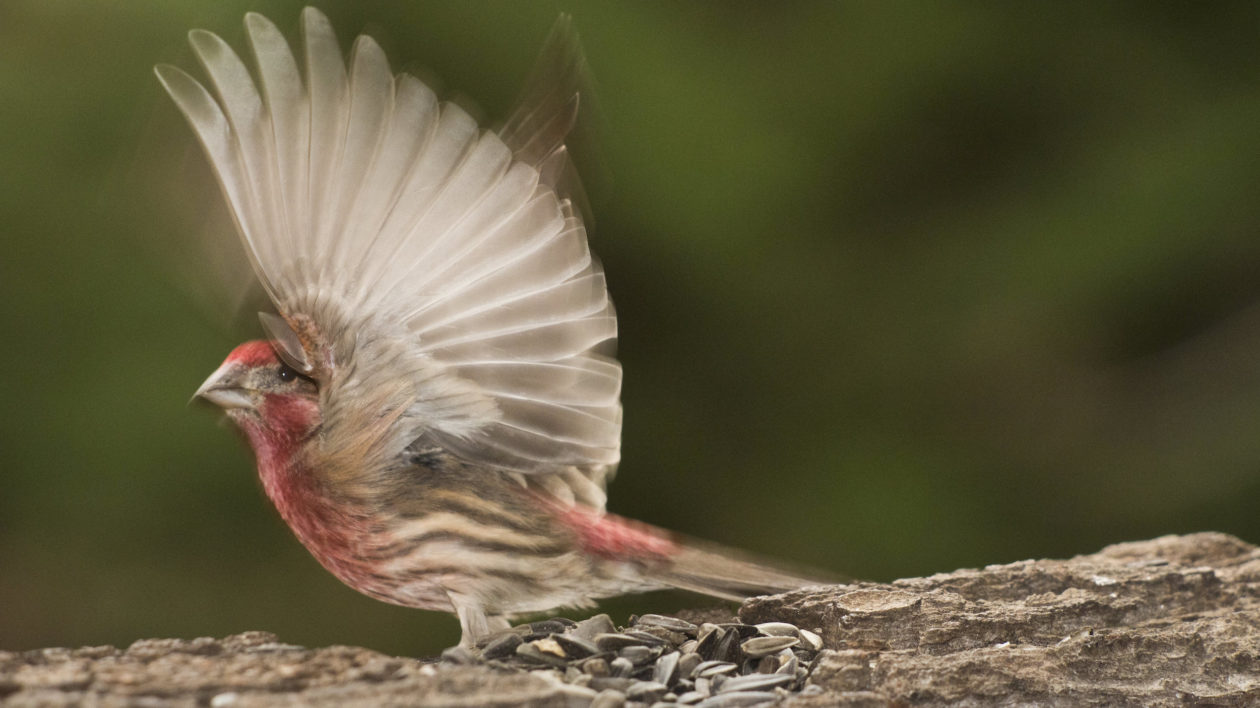
Something that we may notice in birds is the tendency for some species to have wonderful colorations added to their bodies. This tends to make them more attractive, so therefore, their “ornament” must have an obvious function.
As an ornithologist and doctoral student at the University of Michigan, Hill began looking for a system where he could test the basic theory as to why birds evolve these “ornaments”, particularly their colorful feathers. He began to search for a bird that would be easy to catch, could be kept in cages to further study, and one that had a fairly simple feather coloration.
After continuous reading of the literature and observations, Hill found all that he was looking for in one particular species: the house finch.
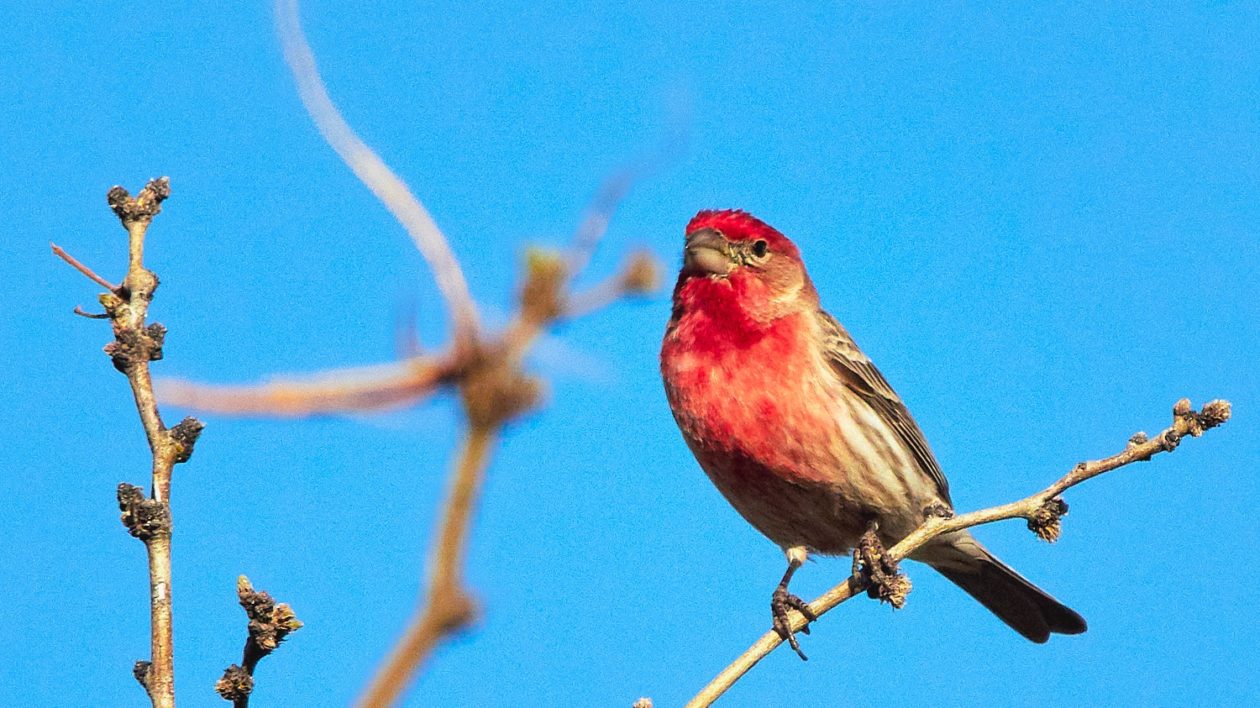
Why House Finches?
Becoming a very abundant and assessable species, the house finch had been introduced to the U.S. in the 1940s and had colonized the eastern part of the country. They had arrived in Michigan less than 10 years before Hill began to pursue studying them.
Some published studies on house finch pigmentation and biochemistry by Alan Brush, former editor of the academic journal The AUK, had shown that the colors in house finch feathers resulted from carotenoids. He attempted to identify the carotenoids, but got it wrong due to the limitations of the analytical equipment at the time.
These findings began to assist Hill as he worked towards his own research question about understanding the mechanism behind these colorations.
“My students and I spent a ton of time establishing that the brightness of House Finch feather coloration was correlated with many aspects of condition, including survival, parasite resistance, and parental care. But we were left with the really big question: “Exactly how does this work? What makes a red male a better bird than a drab male? How could red coloration honestly signal the quality of an individual?””
Hill soon began to realize that he would need to take a deeper dive into the world of biochemistry and genetics.
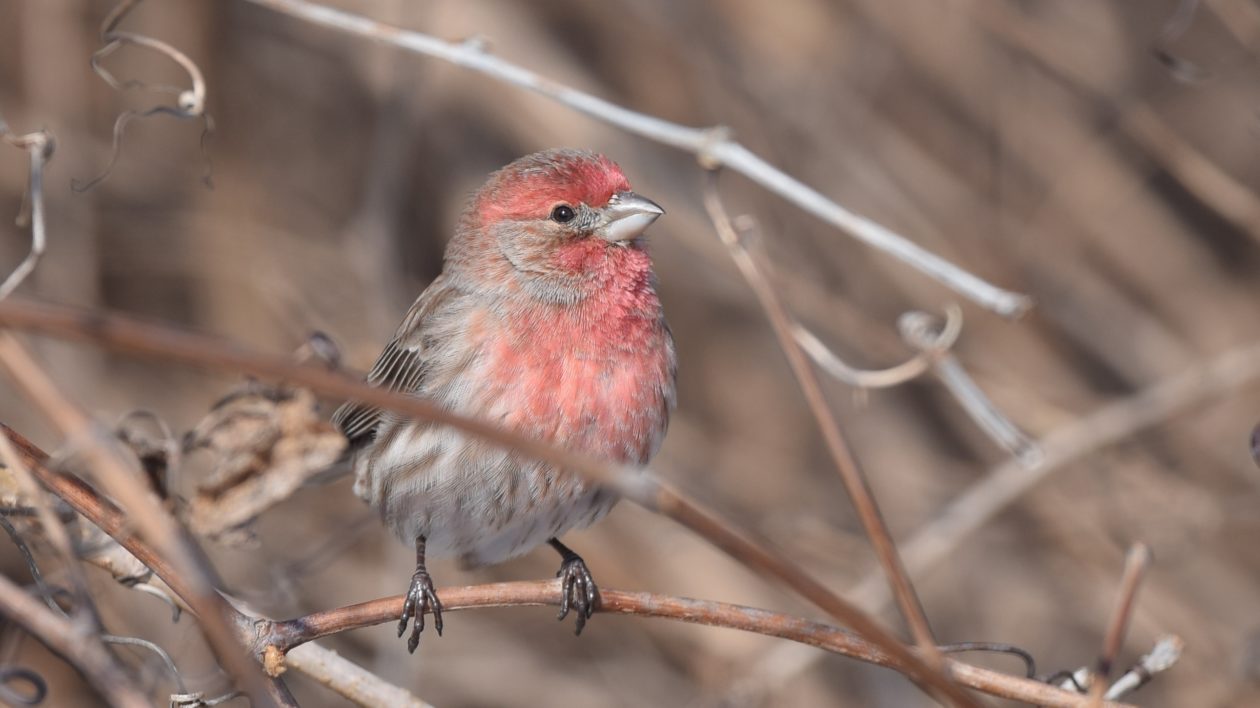
The Discovery of the Gene
To begin to understand the mechanisms behind this pigmentation, you have to start with the basics. Cue the chemistry lesson.
Whether a bird is red, orange, or yellow is the product of the ratio of the different pigments in feathers. These pigments are the bi-products of enzymes. Bird get their colorations specifically through yellow dietary carotenoids, which usually consists of vegetable matter. Birds will then convert these yellow dietary pigments to red. This is how they get their colorful red feathers.
So what would prevent a bird from doing this conversion?
It has been a common assumption that if birds just do not consume enough of these yellow dietary carotenoids, they automatically will not make enough red pigments. Turns out this is not true, as explained in more detail in Hill’s book: “A Red Bird in a Brown Bag.”
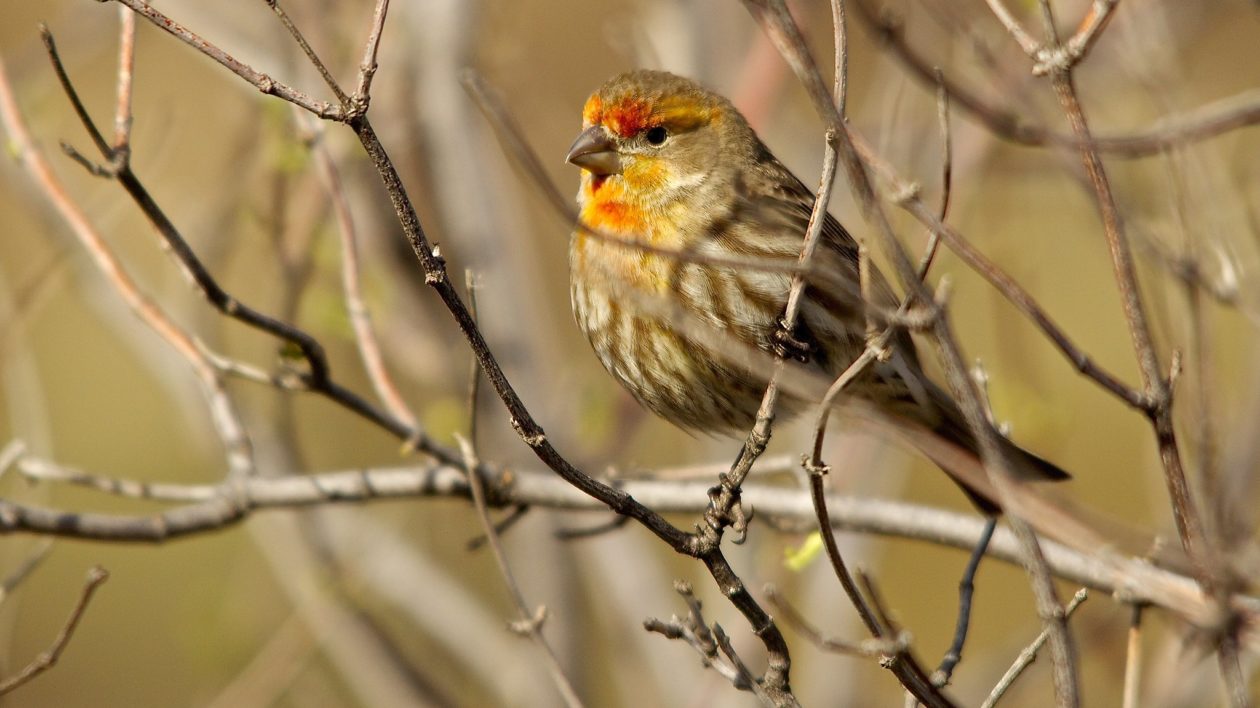
Hill, along with a team of geneticists began understanding the enzyme that converted the carotenoid pigments from yellow to red; because of the chemical reaction involved, they knew this was a ketolase.
“We knew the class of enzyme, but no one knew the specific enzyme that produced the red coloration in birds. We decided to further research this by using canaries.”
During their work with the canaries, Hill and his team soon found the gene that enables birds (and turtles—yeah!) to convert yellow carotenoids to red: CYP2J19. Further, they found a connection of the gene to mitochondria, which we all know as the powerhouse of the cell. CYP2J19 codes in the nucleus, which is connected to the mitochondria. The mitochondria itself is responsible for tons of things that happen in the cell, including regulating the immune system and producing energy.
Hill then made a connection, and what looks to be the start of the answer to his research question.
“The mitochondria regulates key functions in the body, which would be responsible for making an individual healthy or not healthy. This is the connection between ornamentation and performance!”
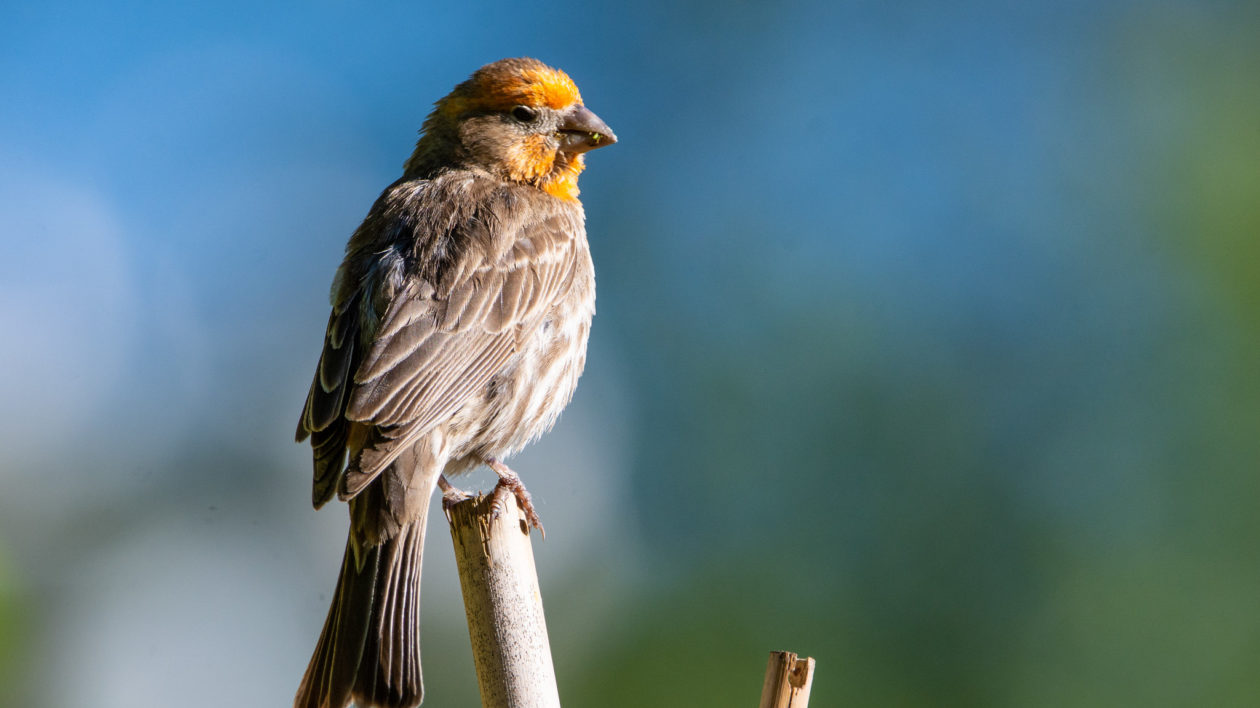
Parenting
Hill notes that this finding is only the beginning and that there is still tons of investigation to do on how the biochemistry of carotenoid pigmentation would link color to the function of the individual. This investigation into red pigmentation will continue in his lab and will be carried out by some of his graduate students.
Nevertheless, he left me with some pretty cool facts that I myself did not know about house finches. Aside from them not being territorial birds, they for sure have the whole parenting thing down.
“The male house finch is a very good father; they contribute about half of the effort to raising offspring,” They are so good that it enables the house finches to breed faster. A single pair will have about 3-4 nests of young in a breeding season.”
Also, after the young hatch and are half grown, the female will leave them to the male and will go off to start the next nest. A single pair can produce 20 offspring!
“They are not big thinkers,” says Hill jokingly, “but they are reproducers!”
And as we all know now, that bright red coloration also plays role in that.
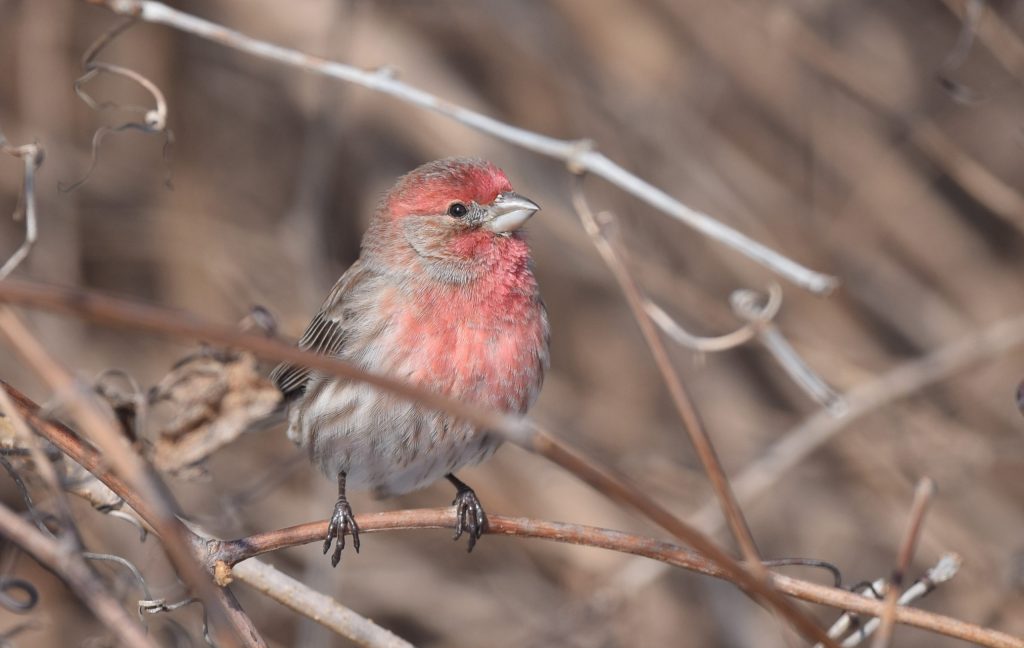



I live in Clearwater, Fl. We have a pair of house finches nesting in our car port. He is very red. Is there anything I can do to make their stay more comfortable. I understand they are not native to this area.
My finches, both purple and American, were showing color on breastst by Jan 15, 2022. I thought it was early for their change. Plus, it has been really cold this January.
From where were the finches introduced?
Red coloration in house finches might still be considered incidental ornamentation, since it seems to be only accidentally associated with other, adaptive traits. However, without the red color, potential mates would have no way of knowing which individuals had those adaptive traits. Having red color as a flag would facilitate the spread of the favorable traits and is, therefore, adaptive in its own right. Right?